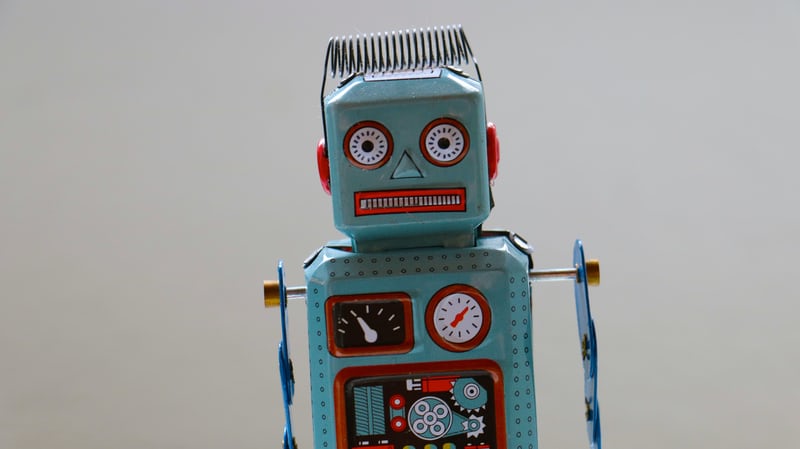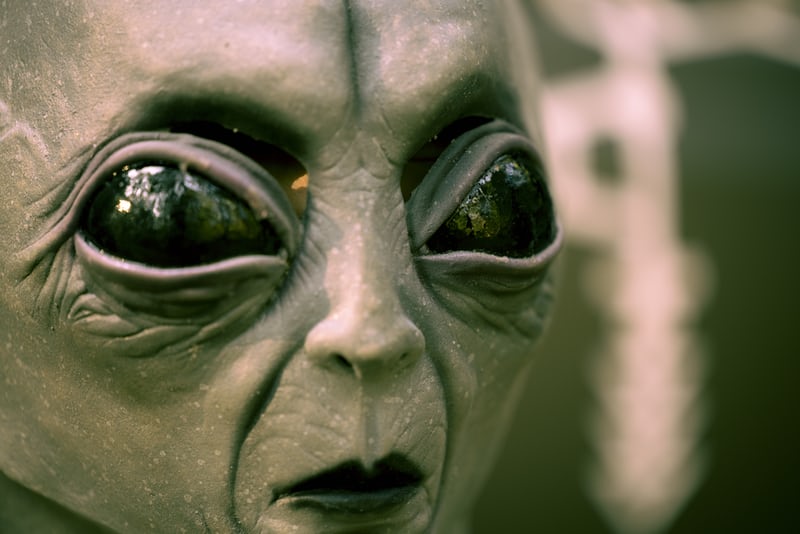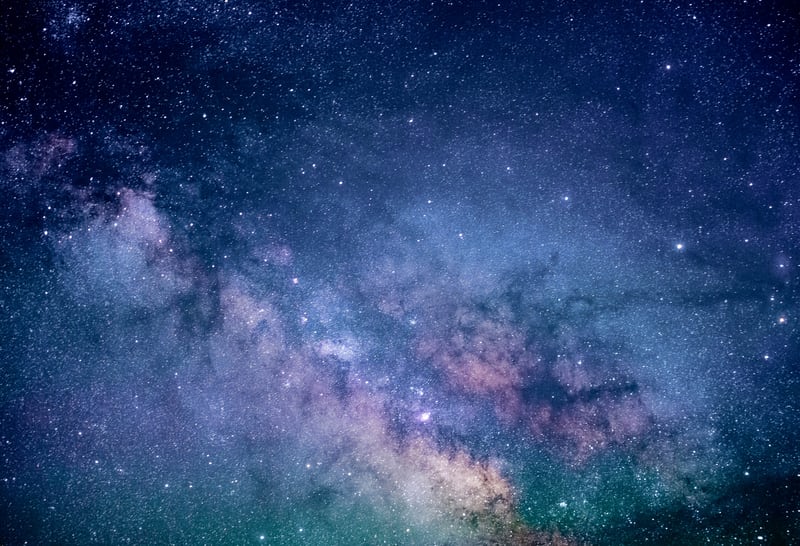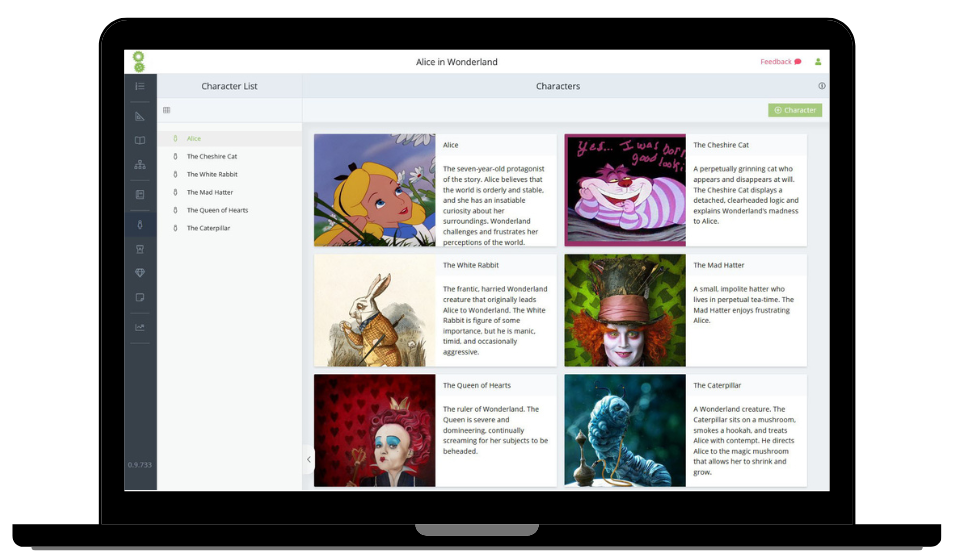
Writing Science Fiction: A Beginner’s Guide to Writing a Sci Fi Novel
Do you dream of writing a great science fiction novel?
If you’re a fan of the genre, then you know a well-written sci-fi story includes excitement, adventure, a fascinating and memorable world, and some truly unique characters and relationships.
But you might also be hesitant.
That’s because the best sci-fi novels don’t just entertain. They also make your readers think—about technology, ethics, and our society’s future.
You might wonder:
How much of a science expert do you need to be?
What tropes and themes should you explore—and when are they too much to be believable?
How do you strike a good balance between action and relationships?
All excellent questions!
In this post we’ll answer all of these questions, and provide our best recommended readings from real world science as well as classic sci-fi novels.
What is Science Fiction
One of the defining features of human beings is our capacity to imagine things that don’t yet exist.
Science Fiction is one of the ways we explore these potential futures, delving into our fears and hopes. By ‘trying out’ imagined options, we may learn what we want to work towards—and what we may want to avoid.
The Oxford Languages defines Sci-Fi as:
Fiction based on imagined future scientific or technological advances and major social or environmental changes, frequently portraying space or time travel and life on other planets.
The term ‘Science Fiction’ often conjures up ideas of space travel and alien races, but in reality the genre is a lot more varied and nuanced.
The main defining feature of Science Fiction is the exploration of futuristic or alternative technologies and societies.
Science Fiction should adhere, however loosely, to established scientific principles and theories.
This differentiates it from ‘Fantasy’, which is not constrained by science, and therefore can include creatures, powers, and skills that are bound only by the internal logic of the story.
Of course, as Arther C. Clarke said, ‘Magic is just science that we don’t understand yet.So there is always some scope for overlap between the genres. Best-selling authors sometimes even contest the classification given to their work by others.
In this article, we’ll look at common themes and tropes found in Science Fiction, then offer six tips for writing a great Science Fiction novel.
What are common themes in Science Fiction?

While Science-Fiction can be greatly varied, there are a few themes that tend to crop up a lot…
Futuristic Technology
Almost a staple of Sci-Fi, futuristic technology may feel very familiar and only be based in the near future, or it could be so far ahead it is barely recognizable.
Future technology is often characterized by being super-efficient, but many authors like to make the worlds feel more authentic by giving the technology the same flaws and foibles we experience today.
Aliens
Whether it’s first contact (Pushing Ice, Rendezvous with Rama), or an established inter-galactic civilization with hundreds of alien races all interacting in trade and culture (The Uplift series), relationships with extraterrestrials are a common theme of Sci-Fi.
Space Travel
A large proportion of Sci-Fi takes place in space or on other planets, real or imagined.
This space travel often uses understood scientific principles to explain the crossing of large distances and how the space ships would be designed (The Hitchhiker’s Guide to the Galaxy, The Expanse Trilogy, Red Mars).
Robots and Artificial Intelligence
A sub-theme of Futuristic Technology, we are all waiting for our robot overlords to take over and rule humanity better than we have. AI in Sci-Fi almost always becomes conscious, but whether these new types of beings are benevolent or aggressive varies.
It’s common for the robots to take human form, sometimes being indistinguishable from real humans, forcing us to consider what it really is that makes us human (2001: A Space Odyssey, Ancillary Justice, Do Androids Dream of Electric Sheep?).
Alternate Societies
As an alternative to space travel and aliens, another popular theme in Sci-Fi is the exploration of alternate societies.
These could be very much like ours, but with a few details changed, such as different political leaders being successful or major world events going in a different direction (the Man in the High Castle, Machines Like Me).
Or they can be completely unrecognizable with entirely different social structures and histories (Consider Her Ways).
Dystopia
The alternate societies Sci-fi explores are often very bleak. Perhaps as a way of trying to head off such dangers, Sci-Fi authors take current trends of modern life and follow them through to their most terrifying ends (Brave New World, The Drowned World, 1984, The Handmaid’s Tale, Fahrenheit 451).
What are common tropes in Science Fiction?
While a theme is a large, overarching concept or idea which is explored, there are also common ‘tropes’ that can be found in Sci-Fi.
Tropes tend to be smaller and more specific in scope than themes, which are more generalized and can be explored in a myriad of different ways.
Tropes aren’t good or bad in themselves, but need to be used skillfully. A novel which is packed full of classic tropes with no twists or surprises will come across as cliche and hacky.
However, used skillfully, tropes can swiftly build a picture, make the story feel comfortable and familiar to the readers, and be subverted to surprise the reader by playing with the expectations.
Here are a handful of the most common tropes in Sci-Fi:
The Redshirt
This term comes from Star Trek—where the main characters wore blue, yellow, or red shirts, depending on their function—science, command, or engineering/security respectively.
When a previously unknown character wearing a red shirt was beamed down to a new planet, you could be sure they were a lower-level security person about to meet a sticky end.
Cryogenic Sleep, or Suspended Animation
It takes a long time to reach anywhere when you’re travelling across the vastness of space. So cryosleep or suspended animation is often employed in order for the characters to not die of old age before they get there.
When a story features cryosleep, it’s very common that someone will wake up early, or the helpless sleepers will be put in peril.
Humanoid Robots or Aliens
As mentioned under themes, we are fascinated by human-shaped things that aren’t human.
It forces us to consider what it is that makes us human, and also makes us horribly fascinated by the idea that the people around us might not be what we think they are. Love stories are common when this trope appears.
Cyborgs / Human Augmentation
’Cyborg’ is a portmanteau of ‘cybernetic organism’, which essentially means a living organism with integrated mechanical or electronic parts.
Similarly to humanoid robots and aliens, this trope feeds our fascination with trying to understand what we are, and what we could become, and allows us to fantasies about superpowers in a scientific way.
Big Brother / Totalitarianism
A great number of Sci-Fi books deal with apocalypse, and while this often means a devastated world with only a few survivors, the other prevailing landscape is that of a highly authoritarian, regimented society which values order and uniformity, and despises creativity, variety, and freedom.
How Great Science Fiction Works

Here are some tips for making your science fiction novel fly light years ahead of the crowd.
Focus on Characters
The biggest pitfall for science fiction writers (and the misconception that puts many readers off science fiction) is that it is all about the world, and not about the characters. This is a big mistake.
While setting and plot are very important in sci-fi, compelling characters are as critical as with any other novel where you want to engage readers and have them fall in love with your story.
So make sure your characters are three dimensional, with flaws, foibles and vulnerabilities. Give them a compelling arc where they evolve as a person, and conflicts which make the reader fear for their safety.
Understand the Science
Science-Fiction readers tend to like science.
That’s not to say that they’ll all be Professors of String Theory or that you have to get a PhD in Astronomy to be able to write Sci-Fi (though it certainly helps, and a lot of successful sci-fi writers are scientists), but if you don’t respect the science at all, you may put off a lot of your readers.
Make sure you have a basic knowledge of the key aspects of science and technology that feature in your novel, and if you want to deviate from established knowledge, make sure you justify it.
Worldbuilding
Writers of Science-Fiction need to spend a lot more time worldbuilding than their colleagues in other genres. Worldbuilding means making sure your story world is internally consistent and feels real – with nuances of culture, politics, and geography.
Decide which aspects of worldbuilding will be most important to the story you want to tell. For some stories, having a clear map of the Universe and knowing how each of the planets and regions interact, will be critical to the plot.
In others, time will be better spent exploring the nuances of the cultures involved, including their languages, customs, and festivals.
Keep the Plot Pacey
With so much worldbuilding, it can be easy to get bogged down. Make sure you’re only ever doing as much worldbuilding as is necessary, while keeping the plot moving forward, otherwise your readers will end up frustrated or bored.
Another good technique for keeping things moving, it to make sure your worldbuilding and other sci-fi themes are always tied into conflict and awe, so readers don’t feel they have to wade through a history or geography lesson to get to the ‘good stuff’, but that all the exposition is just as exciting, and woven into arguments, conflicts, and challenges.
Get inspiration from the real world
Many of the most chilling and thrilling sci-fi books are based on real world events and developments.
By reading magazines and websites about cutting edge science, technology, and psychological and societal research, you can be inspired and give your writing a satisfying undercurrent of authenticity.
Here are a few blogs to get your started:
Go Forth and Conquer
Hopefully this article has helped in your understanding of what Sci-Fi is, and how to go about writing a great novel in the genre.
The most important way to learn how to be a great writer is to read lots of great books. So below, we’ve provided a list of recommended science-fiction reading.
Read as many sci-fi books as you have time for (not only from this list), and see which ones you find most compelling. This will help show you what sort of sci-fi you will most enjoy writing. If you ever need assistance in writing your own sci-fi masterpiece, don’t hesitate to seek paper writing help from experienced writers in the genre.
Furthermore, see what’s handled well in each of the novels (characters, world building, ideas) and what doesn’t work so well. See how you can apply this in your own writing.
Happy writing!
Recommended science-fiction reading:
Ancillary Justice, Anne Leckie
Revelation Space, Alastair Reynolds
1984, George Orwell
Kindred, Octavia Butler
Red Mars, Kim Stanley Robinson
A Fire Upon the Deep, Vernor Vinge
Neuromancer, William Gibson
The Left Hand of Darkness, Ursula K. Le Guin
I, Robot, Isaac Asimov
The Handmaid’s Tale, Margaret Atwood
This is just a small sample of the great science fiction books out there, a cross section which covers most of the common themes or sci-fi.
Unlock your writing potential
If you liked this article by the Novel Factory, then why not try the Novel Factory app for writers?
It includes:
- Plot Templates
- Character Questionnaires
- Writing Guides
- Drag & Drop Plotting Tools
- World Building resources
- Much, much more

